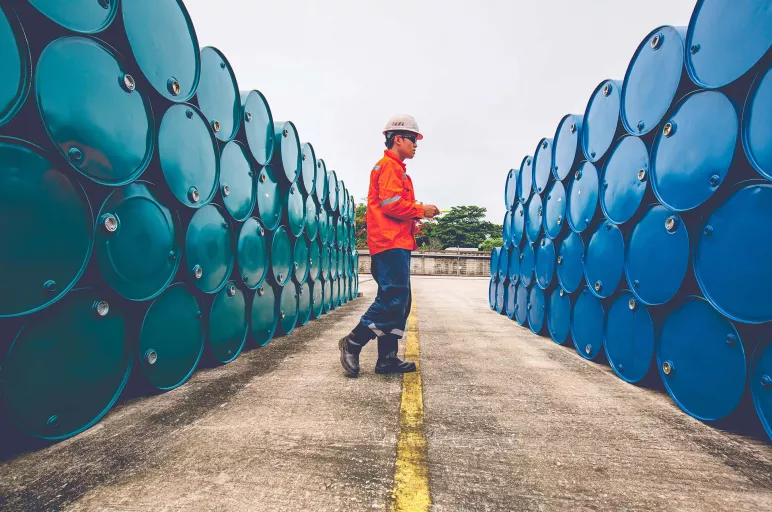
Green Packaging: Three Alternatives Redefining Industrial Drums
- Reconditioned drums reduce carbon emissions by up to 50%, offering cost savings in an energy-conscious market.
- PCR drums lower emissions by 40% compared to virgin plastic, tailored to industry needs with three variants.
- Eco-square drums provide sustainability with recycled content, efficient space utilization and cost-effective solutions for solid content storage.
March 26, 2024 | Packaging
By Virat Venkataraman
With investors and consumers showing a growing affinity toward environmentally responsible organizations, sustainability has become a critical focus area across the packaging value chain.
In fact, many organizations have made clear sustainable packaging commitments for the near, medium and long terms.
Amidst this shift, the significance of industrial packaging, particularly in safeguarding and secondary packaging and handling hazardous content, is often overlooked.
Industrial drums, especially, have emerged as one of the most preferred bulk packaging options as it offers protection and the capability to manage hazardous materials.
The choice of industrial drums as a preferred bulk packaging solution stems from their ease of transportation, extensive customization options and versatility in handling diverse liquid and solid contents.
Despite a lack of innovation in this packaging category, the pressing demand for sustainability is catalyzing change.
Advanced Sustainable Packaging Strategies
Innovative sustainable packaging alternatives promise not only to reduce greenhouse gas emissions but also offer potential cost savings in an energy-conscious economy.
Also Read: Trends in Sustainable Packaging
Here are a few alternatives that can help in setting new standards for sustainability in the packaging industry:
Reconditioned Drums:
Steel drums are the most widely used type of drum. Despite their wide use and high reusability of scrap steel, the production of these drums results in large carbon emissions. This issue can be addressed by utilizing reconditioned drums, which also offer potential cost savings in the current market affected by the energy crisis. An increasing number of suppliers in North America and Europe are providing this sustainable alternative.

For reconditioned drums, a reverse supply chain is established, allowing the supplier to collect used drums from production sites. These drums are returned to the reconditioning line, where they are cleaned, decontaminated, and/or heat treated and purified for reuse.

Drums can undergo various treatments such as re-lacquering, obtaining UN certification, repainting and appropriate labelling. Utilizing reconditioned drums can lower carbon emissions by up to 50% when compared to virgin steel drums. This process is most suitable for large drums, with a volume of 200l or above.
Post Consumer Resin (PCR) Drums:
Plastic drums are a widely used alternative, favored for their cost-effectiveness, light weight and their ability to handle corrosive substances.
Post consumer resin is recycled plastic obtained from industrial packaging items like intermediate bulk containers (IBC) and drums at the end of their lifecycle. PCR drums are offered in three variants, tailored to meet the specific needs of various industries.

Using PCR drums can reduce carbon emissions by up to 40% compared to virgin plastic drums.
Virgin inner and outer layers are used in PCR drums when an active chemical is being stored.
Eco-Square Drums:
Fiber drums are one of the fastest-growing drums categories. They are lightweight, can be easily recycled and are inexpensive compared to steel and plastic drums. Fiber drums are used to store solid/granular content and are not suitable for liquids yet.
There are three key sustainability benefits of using fiber drums:
1. Opt for test liner alternatives over kraft liner-based fiber drums. The test liner, being recycled paper, reduces carbon emissions and offers potential cost savings.
2. Minimize the paper layers in fiber drums. Many existing specifications are more robust than necessary; fewer layers still meet the UN’s homologation standards, potentially saving costs.
3. Choose square-shaped drums for better stackability and more efficient use of pallet space.


To Sum Up
As the packaging industry embraces sustainability, the imperative for eco-conscious solutions intensifies. Through the utilization of renewable materials, optimization of supply chains and implementation of circular economy principles, companies can reduce their environmental footprint while enhancing operational efficiency.
The author is director of consulting at GEP.



